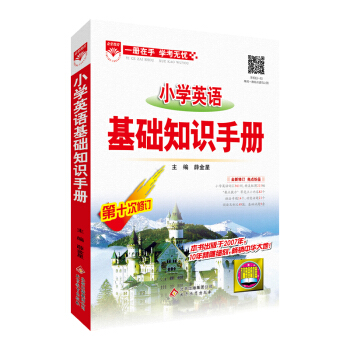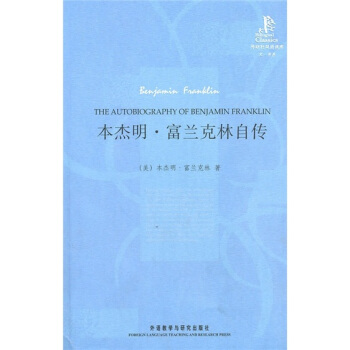![剑桥法律英语 [Professional English in Use Law]](https://pic.windowsfront.com/10064220/bde26c01-03df-4d7d-bb09-555acf683310.jpg)

具体描述
编辑推荐
Professional English in Use Law contains 45 units covering a wide variety of legal vocabulary, Topics include corporate and commercial law, liability, real property law, employment law, information technology, contract law, and intellectual property. The book also introduces general legal vocabulary related to legal systems and legal professions, as well as the functional language lawyers need in their daily working lives.Primarily designed as a self-study reference and practice book, Professional English in Use Law can also be used for classroom work and one-to-one lessons and is suitable for upper-intermediate to advanced students(B2-C1 ). Professional English in Use Law has been developed using authentic legal contexts, texts, and documents.
45 easy-to-use units: vocabulary items are presented and explained in context on left-hand pages with a range of practice exercises on right-hand pages.
A focus on key legal terms expands learners vocabulary and functional language gives learners the confidence and ability to use English in a legal environment.
Over to you sections allow learners to apply the vocabulary they have learned in the unit to their own law studies and working lives.
Includes a comprehensive, learner-friendly answer key and index.
Professional Enghsh in Use Law is an ideal companion for learners preparing for the new Cambridge International Legal English Certifi care (ILEC), covering key vocabulary and topics from the exam.
内容简介
《剑桥法律英语》是一本专为在工作和学习中需要使用法律英语语句和词汇且英文水平为中级或高级的读者而写。它可作为自学的辅导,也可作为课堂教学的教材。如果你准备参加“国际法律英语证书”(ILEC)考试,《剑桥法律英语》也是一本理想的备考用书。《剑桥法律英语》共有45个单元,包含大量法律领域常用词汇,内容涉及到公司法和商法、责任义务、房产法、雇佣法、信息技术、合同法、知识产权等广泛的法律主题。同时介绍了与法律系统、法律职业相关的一般性术语以及从业律师在日常工作中需要使用的功能性语言。整本书中学习与练习相结合,强化了学生的学习效果,提高了他们使用法律知识的能力和自信心。
书后还附有练习答案及索引。
内页插图
目录
THANKS ANDACKNOWLEDGMENTS
INTRODUCTION
THE LEGAL SYSTEM
1 Legal systems
A The structure of the law
B The constitution
C Jurisdiction
2 Sources of law:legislation
A Background to making new law
B Early development of a Bill
C Passing an Act
3 Sources of law:common law
A Common law in the UK
B Law reports
4 The court system
A Civil courts
B Criminal courts
5 Criminal justice and criminal proceedings
A Criminal justice
B Categories of criminal offence
C Criminal court proceedings
6 Civil procedure
A Civil Procedure Rules
B Proceeding with a claim
7 Tribunals
A The status and range of tribunals
B Composition of tribunals and procedure
8 European Union law
A What is the EU?
B How does the EU impact on Member States?
LEGAL PROFESSIONALS
9 Solicitors
A Legal practitioners
B Training
C A partner in a law firm
10 Barristers
A Organisation
B Training and qualifications of practising barristers
11 Working lives
A A company commercial lawyer
B A legal secretary
12 Judges
A Judicial appointments in England and Wales
B The training of judges
C Civil courts: sentencing and court orders
13 A law firms structure and practice
A A law firms structure and practice
LEGAL PROFESSIONALS IN PRACTICE
14 Client care procedures
A Explaining client care procedures
15 Money laundering procedures
A Money laundering procedures
16 Client correspondence
A Client correspondence
B Standard phrases for starting and ending letters and emails
17 Explanations and clarification
A Explaining a procedure
B Approximating and comparing
C Rephrasing and clarifying Legalese
A Legal language
B Latin terms
C Older words and modem equivalents LAW IN PRACTICE
19 Business organisations
A Sole trader
B Partnerships
C Limited Companies
20 Formation of a company
A Incorporation
B Memorandum and Articles of Association
21 Raising capital by share sale
A Share capital
B Share value
C Rights attaching to shares
22 Debt financing: secured lending
A Granting security
B The terms of a charge
23 Company directors and company secretaries
A Qualifications and duties of a company director
B Qualifications and duties of a company secretary
24 Insolvency and winding up
A Insolvency
B Insolvency scenarios
25 Alternative dispute resolution
A Alternative dispute resolution
B ADR procedures
26 Corporation Tax
A Corporation Tax liability in the UK
B Word combinations with tax
27 Mergers and acquisitions
A Mergers and acquisitions
B Dealing disclosure requirements
28 Anti-competitive behaviour
A Competition law
B Competition inquiry
C Information gathering, hearings, and remedies
LIABILITY
29 Tort 1" personal injury claim
A Tort
B Client briefing notes - personal injury claims
30 Tort 2: clinical negligence
A Clinical negligence practice
CONTRACT
31 Forming a contract 1
A Basic principles
B Formation of a contract
32 Forming a contract 2
A Form of contract
B Void or voidable or unenforceable contracts
33 Structure of a commercial contract
A Structure of a commercial contract
34 Express and implied terms
A Express terms
B Implied terms
35 Exclusion, limitation and
standard clauses
A Exclusion and limitation clauses
B Standard clauses
36 Privity of contract,discharge, and remedies
A Privity of contract
B Discharge of contract
C Remedies for breach of contract
37 Standard terms in the sale and supply of goods
A Using standard terms
B Incorporating terms
38 Licensing agreements and computer programs
A Licences and software products
B Exclusion and limitation clauses
39 Commercial leases
A Interest in property
B Terms of a commercial lease
C Obtaining leasehold interest
40 Buying and selling commercial property
A Commercial conveyancing
B Sale by auction
C Sale by private treaty
41 Employment law
A Employment law
B Contract of employment
INTELLECTUAL PROPERTY
42 Copyright and patent
A Copyright
B Patent
43 Trade marks, domain names, and remedies for IP infringement
A Trade marks and domain names
B Remedies for IP infringement
INFORMATION TECHNOLOGY LAW
44 Information technology law and cybercrime
A Computer security
B Cybercrime
e Data protection
ENVIRONMENTAL LAW
45 Environmental law
A International environmental law
B National environmental law
C Application of environmental law
Answer key
Index
精彩书摘
Sole traderJamie Anderson, a partner in the commercial department of a law firm, is commenting on the choices for different trading vehicles for business.
‘A client wanting to operate a business for profit might select from a number of different trading entities. Each has different legal characteristics and is subject to different rules and regulations. The simplest and commonest form of business structure is a sole trader. This generally suits a relatively small enterprise, such as an independent software developer, a hairdresser, or a small shop. Its headed by a single individual and it differs from a company in that the ownership and management is usually vested in the same person, who is personally responsible for all the debts of the business, and may thus risk becoming bankrupt. Finances are confidential and formalities are few, aside from Value Added Tax, or VAT, regulations. Partnerships
‘A common form of structure for certain kinds of business, for example accountants, solicitors, and architects, is a partnership. This needs to have at least two members and normally a maximum of twenty. There is an exemption on size for some types of firm, such as solicitors and accountants. All the partners may be joindy and severally liable for all the debts of the business. The relationship between the partners is usually drafted in the Partnership Agreement. This can set out the duration of the partnership, its name and business, how profits, losses, and running costs are to be shared, how much capital each partner is to contribute, what rules will apply to the capital, what grounds will lead to a partner being expelled from the company, what restrictions are imposed on partners, and so on. Its also possible to have a Limited Liability Partnership, or LLP, which has a legal identity separate from its members. In this sense it resembles a limited company (see text C). Its possible for all the partners except one, known as the general partner, to be a limited partner. A sleeping partner may have a share in the business but doesnt work in it. An individual is therefore able to invest capital in an LLP without risking any further liability. LLPs must be registered with the Registrar of Companies. Limited Companies
A Private Limited Company (Ltd) is a separate legal entity which can sue, and be sued, in its own right. The Company is identified by its registered number, which will remain the same irrespective of any changes of name. A business can start life as a limited company and this may be particularly appropriate where high-risk projects are involved. In some instances, directors will be asked to guarantee the obligations of a company, for example by giving security over personal assets to guarantee company borrowing. This is particularly common in the case of new companies who are not able to demonstrate a history of profitable trading. A Public Limited Company, or PLC, is differentiated from a Private Limited Company in that the shares can be sold to the general public via the stock market to raise share capital. Its mandatory for a PLC to have at least two shareholders, two directors, and a professionally qualified Company Secretary. The minimum anthorised share capital is 50,000 and 25% must be paid up. Before the company can trade or borrow money, a Trading Certificate has to be obtained from the Registrar of Companies (see Unit 20).
前言/序言
用户评价
第一段评价: 这本书的装帧设计简直太棒了,那种沉稳又不失精致的质感,拿到手里就让人觉得内容肯定不一般。内页的排版清晰明了,字体选择也很考究,阅读起来毫不费力,长时间盯着也不会觉得眼睛酸涩。而且,纸张的质量相当不错,即使用荧光笔做了很多标记,也不会出现洇墨的情况,这对于需要反复研读法律文本的人来说,简直是福音。我尤其欣赏它在结构上的用心,章节划分逻辑严密,既有宏观的框架引导,又不失对微观知识点的细致梳理。每次翻阅,都能感受到设计者对阅读体验的极致追求,这不仅仅是一本工具书,更像是一件可以陪伴你职业生涯的伙伴。它的存在本身就是一种鼓励,让你更愿意去深入探索那些看似枯燥的法律条文。翻开扉页,那份对专业精神的敬意,已经悄然传递给了读者。
评分第三段评价: 说实话,我买了很多不同类型的专业英语书籍,很多都是“买回来吃灰”的命。但这一本,我几乎每天都会翻阅,哪怕只有十分钟,也能找到新的收获。它最打动我的地方在于其内容的“深度耦合性”——它不是简单地罗列法律词汇,而是深入探讨了特定法律语境下,不同表达方式所蕴含的细微差别和潜在影响。比如,关于“shall”和“will”在法律合同中的精确用法,书里给出的解释极其到位,清晰地阐明了这种选择背后的法律约束力差异。这种对语言精确性的极致追求,恰恰是法律工作者最需要的。它教会我的不是如何“说”法律英语,而是如何“思考”法律英语,如何运用语言工具来构建无懈可击的法律论证。这种由内而外的提升,远比死记硬背要来得扎实和持久。
评分第二段评价: 我原本以为这种专门针对某个职业领域的英语学习资料,内容会非常刻板和枯燥,无非就是一堆晦涩难懂的术语堆砌。然而,这本书彻底颠覆了我的想象。它没有采用那种填鸭式的教育方式,反而是通过大量贴近真实工作场景的案例和对话来构建知识体系。比如,它解析合同条款时的那种细致入微,以及在模拟法庭辩论中对语气的把握,都展现出极高的实战价值。我尝试着跟着书中的发音进行跟读练习,发现自己对那些复杂的法律短语的发音和连读都有了新的认识,这在以往的通用英语教材中是绝对学不到的。这本书真正做到了“润物细无声”,让你在不知不觉中,就将那些“硬核”的法律表达内化成了自己的语言习惯。对于想在国际法律事务中游刃有余的朋友来说,这本书提供的不仅仅是词汇,更是一种思维模式的切换。
评分第四段评价: 我发现这本书在知识的更新迭代上似乎做得非常到位。尽管法律是传统的学科,但法律实务的运作方式和常用表达总是在微调,尤其是在涉及新兴领域时。这本书的编纂显然紧跟时代步伐,内容没有丝毫过时的陈旧感。我特别喜欢它在每个单元后附带的“实践挑战”部分,那些设计巧妙的小任务,迫使你必须综合运用前面学到的所有知识点去解决一个小型问题。这种主动学习的模式,极大地增强了知识的留存率。对于我这种工作繁忙,无法抽出大块时间系统学习的人来说,这种“碎片化但高密度”的学习结构简直是救星。它仿佛有一个经验丰富的导师在身边,随时给你布置适度的“家庭作业”,确保你没有偷懒,并且能够真正掌握所学。
评分第五段评价: 从一个非英语母语学习者的角度来看,这本书的难度设置把握得恰到好处,它既有足够的挑战性,让你感受到自己在进步,又不会因为难度过高而产生挫败感。它巧妙地将法律术语的介绍与常用句型、惯用表达相结合,形成了一个立体的学习网络。我注意到,它在解释某些复杂的法律概念时,会使用更简洁、更生活化的方式进行初步铺垫,然后再引向正式的法律文本,这种循序渐进的引导方式,极大地降低了初学者的入门门槛。这本书的价值,已经超越了单纯的语言学习工具,更像是一份关于如何理解和参与现代法律实践的入门指南。它帮助我建立起一种对法律语言的“语感”,这种语感是任何词典都无法替代的宝贵财富。
评分实用,有帮助,,,,,,,,
评分实用,有帮助,,,,,,,,
评分不错不错不错不错不错
评分感觉还是可以,关键看自己。
评分好,省,快,服务一流
评分我喜欢夜晚,喜欢它的安静。浅写一纸心情,流连文字之间,感受文字的魅力,幻想着未来。有时候幻想着像徐霞客一样,不受世俗的纷扰,游离于名山大川,饱览秀丽的风景,自由自在地与天地为伍,记录各地的风土人情,浅墨所见所闻。过着不闻事事,只闻山水田园的悠闲生活。
评分月色零落在窗台,带来一缕淡淡地清愁,悄然滑落眉间,寂寞,拖着长长的身影,在午夜中静静地流淌到每一个角落,诠释着内心所有思绪。让文字宣泄寂寞的心灵,释放出灵魂深处的孤独,那一抹忧伤在无边的苍穹中匆匆流逝,踌躇的情愫迈不开蹒跚的步伐,我空洞的双目望不穿瑟瑟的寒意。静夜里,都市的繁华拉开夜幕,流年的忧伤染尽了落寞,一个人在文字的墨香中沉醉。
评分爱情晚点来,就不会走得太早。
评分法律英语知识比较缺乏,希望能有所改善。
相关图书
本站所有内容均为互联网搜索引擎提供的公开搜索信息,本站不存储任何数据与内容,任何内容与数据均与本站无关,如有需要请联系相关搜索引擎包括但不限于百度,google,bing,sogou 等
© 2025 book.coffeedeals.club All Rights Reserved. 静流书站 版权所有




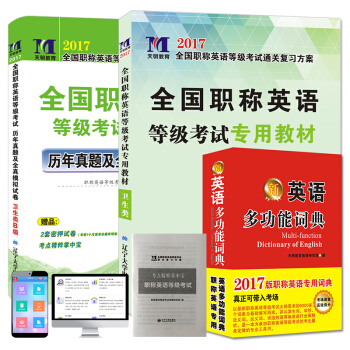


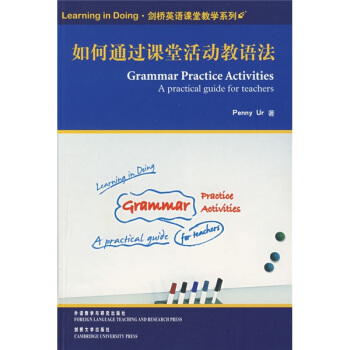
![哈佛蓝星双语经典名著导读:芒果街上的小屋 [The House on Mango Street] pdf epub mobi 电子书 下载](https://pic.windowsfront.com/10584403/10ce8e8b-ca2a-42ba-a29d-a7e2b3da802b.jpg)
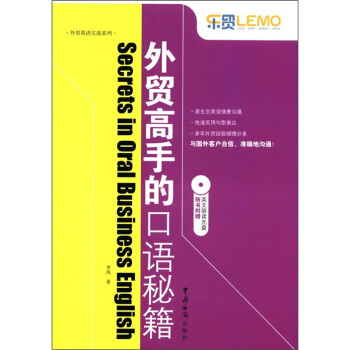



![丽声 我爱小怪物双语阶梯阅读 第一级 点读版 (附光盘) [4-9岁] pdf epub mobi 电子书 下载](https://pic.windowsfront.com/11737775/55b755dcN158f0ef3.jpg)

![英国文学卷:刀锋(英文全本) [The Razor's Edge] pdf epub mobi 电子书 下载](https://pic.windowsfront.com/12052944/58464744Nb750075e.jpg)
